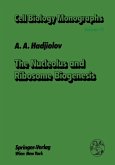The Golgi apparatus (GA) found as a ubiquitous component of all eukaryotic cells is typically comprised of stacks of 3 to 7 or more saccules called cisternae that consist of a lumen or central cavity surrounded by a membrane. At the peripheries of the saccules may be found perforations about 600 nM in diameter known as fenestrate. Such fenestrated margins are usually continuous with a system of vesicles and tubules. The individual stacks are organized into larger aggregate GA structures either side-by-side to form a complex ribbon with stacks interconnected by the peripheral tubules or in a dispersed arrangement with the stacks widely separated to appear almost as discrete units within the cytoplasm. The Golgi apparatus is often considered as the "distribution and shipping department" for the cell but also plays an equally important role in cell growth and membrane biogenesis. It modifies proteins and lipids (fats) to prepare them for export outside the cell or for delivery to the plasma membrane in support of membrane growth and replacement of membrane constituents lost due to turnover.
The Golgi Apparatus traces the first 100 years of GA discovery from the first published accounts from Pavia, Italy, in 1898 to the Centenary Celebration in Pavia, Italy, in 1998 to our most recent discoveries. It summarizes the past 50 years beginning with the modern era of GA discovery initiated in 1954 and made possible by the advent of the electron microscope, methods of cell fractionation and biochemical analysis, leading up to the present era where focus has been on molecular biology. Emphasized are organization and function, the existence and importance of cisternal tubules, development of methods of GA isolation and subfractionation, biochemical analyses of highly purified GA fractions and comparison to equally highly purified reference fractions and their use in cell free systems analysis of membrane trafficking, the concept of GA function as part of an integrated system of internal endomembranes (the endomembrane system), evidence for differentiation of membranes across the stacks of GA cisternae, and flux of membrane constituents along the polarity gradient defined by membrane differentiation all culminating in the membrane maturation or flow differentiation model of GA function. More recent contributions to GA in cell growth (enlargement) and to cancer are summarized in final chapters.
The Golgi Apparatus traces the first 100 years of GA discovery from the first published accounts from Pavia, Italy, in 1898 to the Centenary Celebration in Pavia, Italy, in 1998 to our most recent discoveries. It summarizes the past 50 years beginning with the modern era of GA discovery initiated in 1954 and made possible by the advent of the electron microscope, methods of cell fractionation and biochemical analysis, leading up to the present era where focus has been on molecular biology. Emphasized are organization and function, the existence and importance of cisternal tubules, development of methods of GA isolation and subfractionation, biochemical analyses of highly purified GA fractions and comparison to equally highly purified reference fractions and their use in cell free systems analysis of membrane trafficking, the concept of GA function as part of an integrated system of internal endomembranes (the endomembrane system), evidence for differentiation of membranes across the stacks of GA cisternae, and flux of membrane constituents along the polarity gradient defined by membrane differentiation all culminating in the membrane maturation or flow differentiation model of GA function. More recent contributions to GA in cell growth (enlargement) and to cancer are summarized in final chapters.
Dieser Download kann aus rechtlichen Gründen nur mit Rechnungsadresse in A, B, BG, CY, CZ, D, DK, EW, E, FIN, F, GR, HR, H, IRL, I, LT, L, LR, M, NL, PL, P, R, S, SLO, SK ausgeliefert werden.









